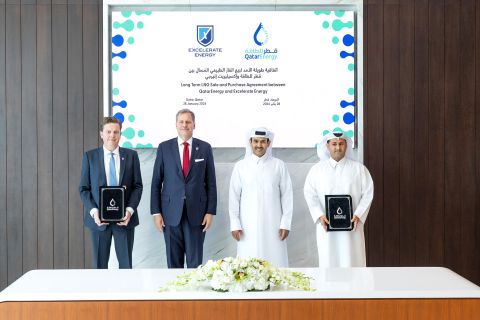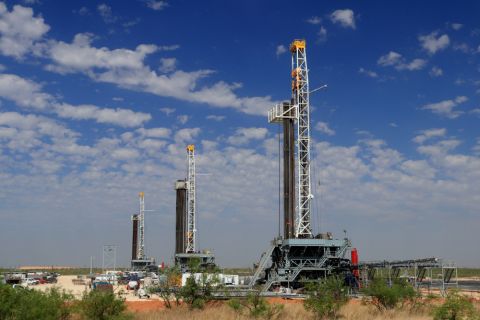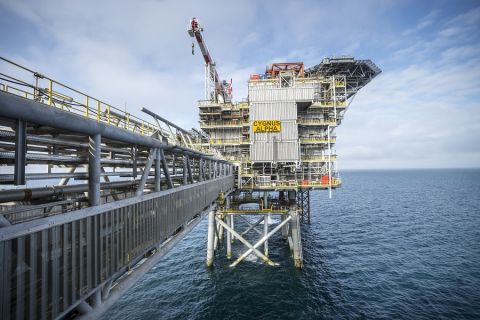As with other industries facing environmental compliance rules and regulations, the pressure for E&P companies to understand the intricacies of what must be done and to “do it right” can be daunting. If compliance were not challenging enough, it often appears the mandates are constantly shifting and only creating more confusion.
Consequently, it is critical for company management to be well-informed while empowered by the best methods, project management and innovative software. Typically, that combination helps ensure that environmental compliance should not be an onerous, thankless task but one that can be accomplished efficiently and effectively.
Critical to eliminate guesswork
How concerned are oil and gas companies about environmental compliance? According to a blog for Environmental Health & Safety and Sustainability Professionals, when 10,000 filings of the largest companies in the oil and gas industry were analyzed, they cited environmental compliance as operators’ No. 1 risk factor.
Advice about compliance that has stood the test of time is that it should be approached essentially like taxes. “With all the complex regulations, you’re not going to stumble into compliance,” the advice goes. Companies should understand what to do but also recognize what they do not have to do, thereby eliminating needless additional work and expense. Invariably the question arises as to whether oil and gas companies can handle environmental compliance themselves without calling in a consultant.
Yes, they can; however, many companies do not have designated compliance officers to cope exclusively with the task. Also, in companies that do, these officers are often overwhelmed by the demands along with the internal costs and specialized expertise increasingly required. Therefore, while it is each company’s decision, external consultants are typically brought in as being more experienced, efficient and cost-effective to eliminate wasteful compliance guesswork.
Representative compliance approaches
Categorically, E&P companies must meet environmental compliance rules and regulations on three fronts: air, water and waste. Although an exhaustive discussion of compliance complexities would require a thick whitepaper, consider a general overview. Popular solutions, regulation management and managed services, for example, cut through the regulatory maze and simplify the compliance challenge as well as setting forth a strategy.
In regulation management, the intimidation factor of environmental rules and regulations spanning literally thousands of pages can be systematically eliminated. Only regulations specifically having an impact on company operations are identified and put into a user-friendly format. With that in place, companies no longer have to wade through minutiae when deciding which tasks and regulation updates are applicable. This system sends only relevant notices, and these are automatically updated in the compliance system.
The managed services approach, on the other hand, puts virtually the entire compliance solution under one umbrella for a fixed cost. The objective is to make permitting smoother, pare down the requirements glut to only applicable ones for each specific site and, in doing so, get and keep companies in compliance most cost-effectively. When opting for this comprehensive approach, the process includes putting a site-specific program in place; managing regulatory/permitting changes, including permit renewals; completing identified tasks; and making routine site visits to ensure compliance is ongoing.
Training in certain compliance areas is mandated, and in a managed services concept, training is provided on spill prevention, control and countermeasure and storm water pollution prevention plan (SWPPP), for example. Throughout the process, details are the name of the game. Therefore, required records are kept updated (especially helpful for unannounced inspections), task completions are coordinated and agency inspection assistance is provided, as are other site-specific services.
Innovative software
Coping with the sheer enormity and complexity of environmental mandates has virtually ensured that comprehensive software will play an ever-larger role in the oil industry’s environmental compliance. While compliance software selection is limited compared to software in other fields, the available technology has proved a very helpful tool. Among the newest innovations are Cloud/SaaS solutions, which offer a single platform for managing unlimited regulations.
Other examples include one vendor’s software that features its entire suite functioning as a single toolset, with integrated alerts/notifications and centralized data and reporting platforms. Its software automates environmental report submission as well as providing tools for things like audit trails, document management and centralized task list. Whether generating performance reports of air emission or tracking waste streams, this software illustrates the value-add that technology has become.
Another software example comes from a vendor providing oil and gas compliance software for the spectrum of environmental management including (a) air, water and waste, collecting, tracking and reporting all related data on a Web-based basis; (b) environmental sustainability, capturing, tracking and evaluating data to allow real-time decisions; and (c) permits, tracking critical dates and activities as relative to permit and regulatory requirements.
Another company offers a compliance management model that streamlines and simplifies both implementation and maintenance. Included are requirements associated with compliance tasks as well as nonscheduled requirements and full implementation of all site-specific requirements. An oil and gas company’s level of compliance assurance can be increased simply by indicating that any identified requirement is to become a task.
Air, water and waste
At most upstream companies, management accepts the reality that environmental compliance is mandatory, not optional. For those newly tasked with compliance, a summation is helpful as to the use of updated approaches and a comprehensive software component.
In the U.S., national ambient air quality standards have become stricter, and actually obtaining permits is more difficult. Within the permitting process are nonattainment new source review and prevention of significant deterioration as well as acid rain permits, Title V permits and greenhouse gas permits. Large projects often entail modeling protocols, and even small projects require impact analysis. Additionally, air dispersion modeling has become much more stringent, further complicating the permitting process. Compliance requires a systematized compliance program.
Water compliance is extraordinarily all-encompassing, as stated in the national pollutant discharge elimination system (NPDES) program. Any facility discharging pollutants from any point within the U.S. must have an NPDES permit. Areas covered include not only wastewater and nonprocess wastewater but also storm water discharges. Storm water discharges have gained particular attention and require a SWPPP. The intent is to prevent pollutants from mixing with storm water runoff. As with air compliance, water requires a systematized compliance program.
Waste compliance is the source of significant regulatory attention because of its inherently damaging characteristics. Primarily, waste regulation is handled under the Resources Conservation and Recovery Act, according to the U.S. Environmental Protection Agency (EPA). The agency states that it enforces safe handling, treatment, storage and disposal of hazardous wastes, for example, and verifies compliance through a comprehensive monitoring program. As with air and water, the solution for upstream companies is a waste compliance program administered internally or through external expertise.
Simplifying the regulatory jungle
Due to the complexities of the EPA’s mandated environmental compliance, it has become increasingly difficult for oil and gas companies not only to comply but to understand the overall challenge in the first place. Improved approaches, better expertise and innovative technology are providing better solutions to oil and gas companies so they can focus on their business, which is E&P, not environmental compliance.
Recommended Reading
Excelerate Energy, Qatar Sign 15-year LNG Agreement
2024-01-29 - Excelerate agreed to purchase up to 1 million tonnes per anumm of LNG in Bangladesh from QatarEnergy.
UK’s Union Jack Oil to Expand into the Permian
2024-01-29 - In addition to its three mineral royalty acquisitions in the Permian, Union Jack Oil is also looking to expand into Oklahoma via joint ventures with Reach Oil & Gas Inc.
Eni, Vår Energi Wrap Up Acquisition of Neptune Energy Assets
2024-01-31 - Neptune retains its German operations, Vår takes over the Norwegian portfolio and Eni scoops up the rest of the assets under the $4.9 billion deal.
NOG Closes Utica Shale, Delaware Basin Acquisitions
2024-02-05 - Northern Oil and Gas’ Utica deal marks the entry of the non-op E&P in the shale play while it’s Delaware Basin acquisition extends its footprint in the Permian.
California Resources Corp., Aera Energy to Combine in $2.1B Merger
2024-02-07 - The announced combination between California Resources and Aera Energy comes one year after Exxon and Shell closed the sale of Aera to a German asset manager for $4 billion.





